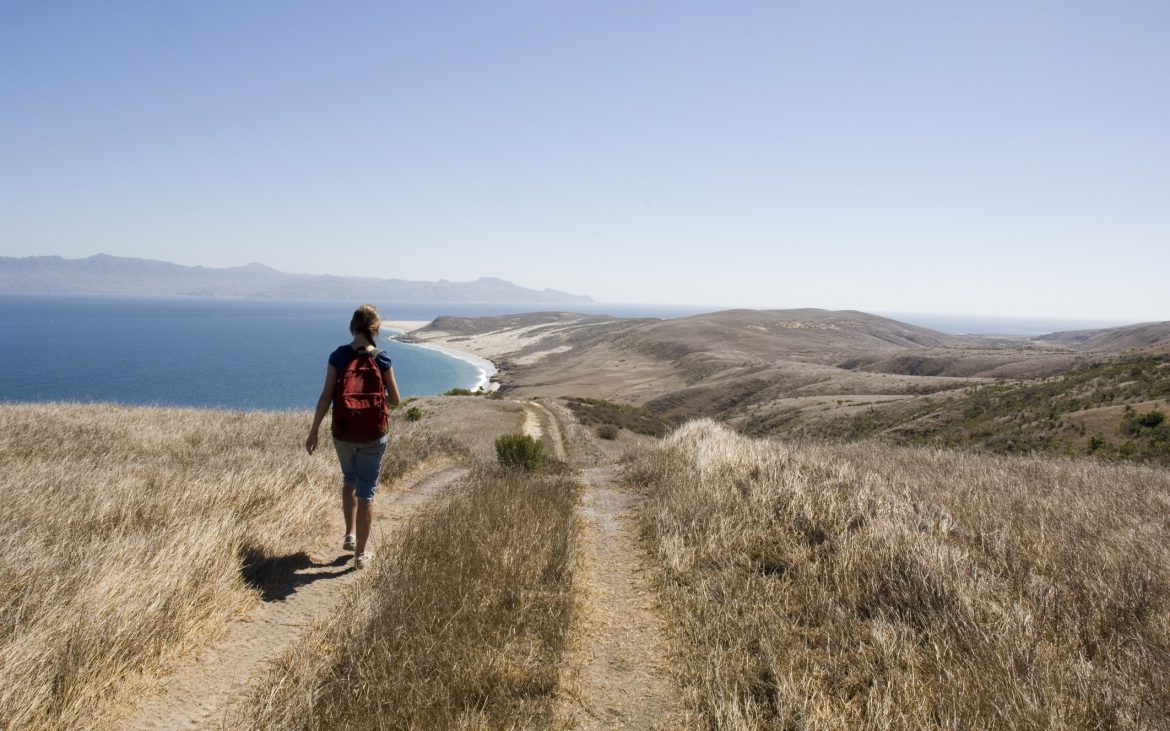Daybreak was an hour away when I tiptoed away from camp for a 20-mile run along a quiet forest service road. The route meandered along a slow, winding river deep in the heart of Oregon’s Deschutes National Forest. It was an ideal running spot except for one thing: no cellular phone coverage. Ten miles later when I suffered a bad injury, I wished I’d picked another place to train—or at least carried a personal locator beacon.
North Fork Trail in the Deschutes National Forest. Photo: Rene Agredano
What a Personal Locator Beacon Does and Does Not Do
Every RVer has great campfire stories about getting stuck up a creek without a paddle. From getting stuck in sandy soil to getting lost in the woods, some backcountry situations end up far worse than others. Nobody ever expects to be in the kind of position that requires a search and rescue team, but if cellular coverage isn’t available at the time, you may not live to tell about it. That’s why it makes so much sense to invest in a Personal Locator Beacon (PLB) if you crave outdoor adventure like I do.
These small devices are about the size of a smartphone, but they don’t need cellular connectivity to save your life. Instead, what a personal locator beacon does is use satellite technology to send SOS messages and location coordinates to search and rescue authorities who can send help your way. PLBs are great choices for most adventurers because:
- You only pay for the unit; unlike a GPS satellite messenger unit, PLBs don’t require a subscription service
- PLBs work anywhere in the world over the public Cospas-Sarsat satellite system
- PLBs send out the strongest available signal, day or night, even in rough weather conditions
The author hitting the trail in Oregon. Photo: Rene Agredano
A PLB emergency signal can make a bad situation better. But unlike a satellite messenger device, which allows users to send text messages, a PLB only sends distress signals to emergency personnel. Once you send the SOS signal, there’s no turning back. Rescuers get dispatched to your precise location, so you must carefully consider the consequences of hitting “send.” This is not the kind of device you’ll use when you have a flat tire or engine calamity — that’s what your cell phone and Good Sam Roadside Assistance will do for you. Instead, PLBs are intended for true emergencies, like getting badly lost on a hike or after an unfortunate grizzly bear attack. If authorities decide your situation wasn’t life-threatening, you could get stuck with the bill to get you home.
ACR Personal Locator Beacon.
Should you find yourself in a life-or-death predicament, a personal locator beacon like the ACR ResQlink 400 PLB can bring help. Rugged and small, the buoyant unit can be deployed in any environment for fast rescue:
- The distress signal gets sent over three Cospas-Sarsat satellite systems including the new MEOSAR, which provides almost instant signal detection by authorities. It’s so precise that anyone with this unit can be located within 100 meters (328 feet), 95 percent of the time, within five minutes of sending a distress signal.
- Two types of built-in lights up the odds of a faster rescue at night or in other low visibility conditions.
- This personal locator beacon does have a five-year battery life. It sounds short, but if you don’t use it in that amount of time, just send it back to the manufacturer with $150 and your unit will be returned with a fresh five-year battery. Should you need to deploy the unit in a true emergency, the manufacturer will replace it at no charge in exchange for a user testimonial.
The author running a trail in the Deschutes National Forest. Photo: Rene Agredano
Other PLBs exist, but the ACR ResQlink 400 PLB was recommended to me by an RVing friend who travels and hikes solo in remote areas. I hadn’t given these little devices much thought until the day I became injured on that remote forest road and painfully hobbled ten miles back to camp. At the time it felt life-threatening, but in retrospect, now I know wasn’t a bad enough situation to require an emergency personnel rescue. If it had been, it’s good to know that a personal locator beacon can help me live to another day, so that I can spin another great tale while sitting around the campfire with friends.
